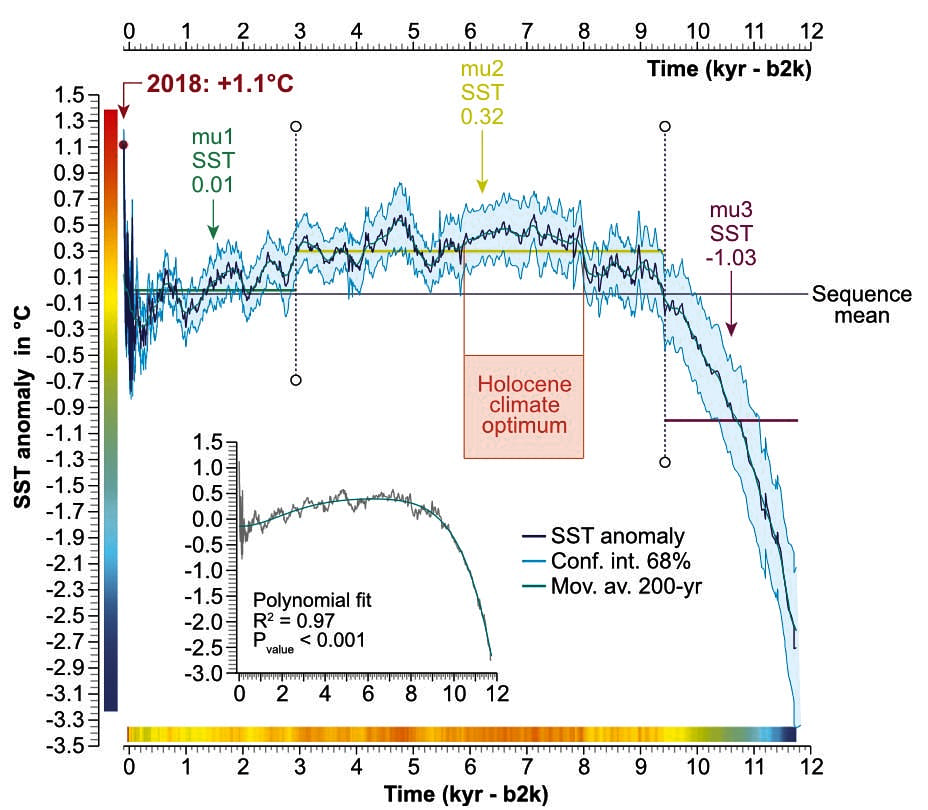-
Partager cette page
Anthropocene tipping point reverses long-term Holocene cooling of the Mediterranean Sea: A meta-analysis of the basin’s Sea Surface Temperature records

Par N. Marriner, D. Kaniewski, M. Pourkerman, B. Devillers
Abstract
The Mediterranean is facing numerous socio-environmental challenges linked to global change, frequently compounded by rapid population growth. Within this framework, regional-scale Holocene temperature re-constructions are key to placing industrial-era warming into the perspective of natural climatic variability. Here, we present a new Mediterranean Sea Surface Temperature (SST) stack based on 54 records for the last 11,750 years, to evaluate millennial-to-centennial-scale climate variability and to contextualize present and future changes. The Holocene thermal maximum is reconstructed 9400–3000 years ago and is estimated to have been an average of 0.47 ± 0.2 ◦C warmer than the mean for 1900–1960, followed by the onset of long-term cooling beginning around 3000 years BP. The coolest temperatures during the last ten millennia are recorded during the Little Ice Age. We find that Mediterranean Sea temperatures have risen from near the coldest to warmest levels of the Holocene within the past century, with decadal warming rates that are ~16 times greater than the closest interglacial analogue. The basin’s SSTs have consistently exceeded the full distribution of Holocene warmth since 2011.
https://doi.org/10.1016/j.earscirev.2022.103986






